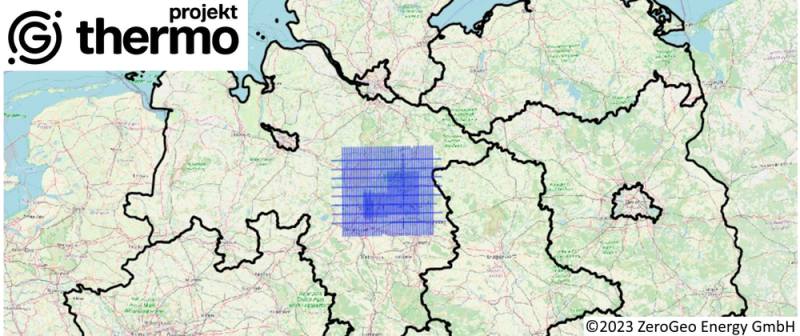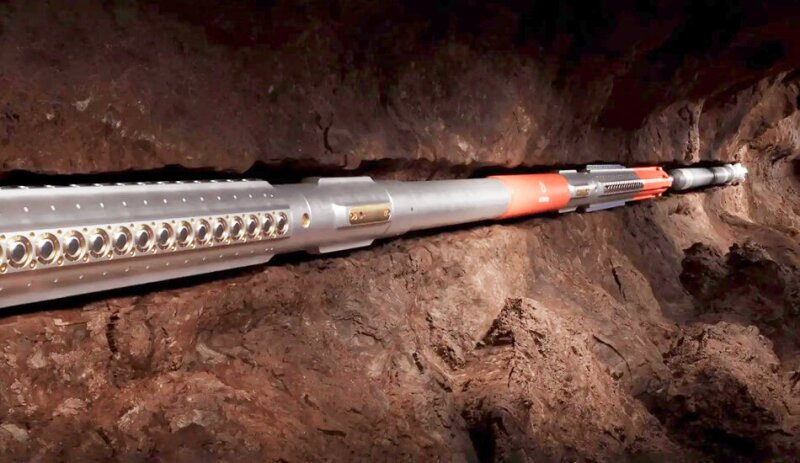Earlier this year, GA Drilling and ZeroGeo Energy unveiled plans for a 12-MW geothermal power plant in Lower Saxony, Germany, named "Projekt Thermo." This partnership, formalized by a memorandum of understanding in February, aims to lead to a series of geothermal projects across Europe.
ZeroGeo, a Swiss-based energy company founded in 2021, will be the project’s operator having secured two geothermal exploration permits in Lower Saxony where it completed a geophysical campaign in early 2023. Notably, this campaign featured a 5000-km² aerial full tensor gravity gradiometry survey, marking its first application in Europe for geothermal prospecting.
Projekt Thermo will be the first commercial project for ZeroGeo and its partner GA Drilling which will be debuting its "anchorbit" technology to provide enhanced drilling stability. The company has described the tool as a downhole walking system that locks the drillstring into place as a conventional rotary steerable system drills deeper.
Igor Kočiš, founder and CEO of GA Drilling, recently shared in an interview with JPT that the upcoming project in Germany represents a major milestone for the firm that was founded 16 years ago in Bratislava, Slovakia.
“I would emphasize that we strongly believe geothermal energy is a natural and low-risk solution for the energy industry. What has been missing is a concentrated effort from the drilling industry and new technology companies to collectively drive significant innovations. Now, as this collaboration takes shape, I am extremely excited about the next phase that’s coming.”
As GA Drilling gears up for its commercial venture, it joins a small wave of companies working to prove their potential in the new-age geothermal sector. Leading the pack is Houston's Fervo Energy, widely regarded as a frontrunner. Meanwhile, others including Sage Geosystems and XGS Energy are set to initiate field trials before the year concludes.
Commenting on the growing momentum behind the geothermal market, Kočiš said that there has been a “huge step change” compared to several years ago “when if you were talking to the drilling companies across the industry, nobody wanted to discuss geothermal—they were purely focused on fossil fuels.”
But the tides have turned and interest in geothermal is surging thanks to the wider embrace of the energy transition which has led many to realize that there exists a massive synergy between oil and gas and geothermal technologies.
Kočiš emphasized the necessity of capitalizing on this overlap for geothermal to scale, stating, “only through the close cooperation with the existing drilling industry, because of the number of assets—like the rigs—and all the skilled people that can easily jump into what is the basically the same job.”

Taking Anchorbit to the Field
Regarding GA Drilling’s roadmap, the company made notable progress last year when it held its first public demonstration of the anchorbit in a test well owned by drilling contractor and investor Nabors Industries in Houston.
GA Drilling considers the new tool to be a crucial element of its quest to drill deeper for cheaper and claims the early data show it can eliminate drillstring vibrations to better stabilize the drill bit.
Kočiš stated, “This not only allows for enhanced control over the system but also eliminates stick/slips and other negative events that can happen during the drilling process.”
Additionally, the CEO said the anchorbit enhances the rate of penetration by enabling the use of increased torque. This allows for drilling through harder rock without the need for higher rotation speeds, potentially doubling the lifespan of a conventional drill bit.
The objective with the anchorbit is to reach drilling depths of 4–5 km, surpassing the current economical limit for geothermal wells by at least 1 km, according to GA Drilling. However, the anchorbit will be used only when the rock is hard enough to maximize its advantages.
In some cases, this means the tool might not be deployed until reaching the dense crystalline basement layers, potentially hundreds or thousands of feet down. Conversely, in regions like Norway, where hard rock is near the surface, the anchorbit could be utilized right from the drilling outset.

Plasmabit Demonstration Coming?
The German project will proceed without the plasmabit, a high-powered plasma pulse tool that GA Drilling said remains under development. The plan is for the electric-powered tool to drill through the hardest of rocks and facilitate economic drilling to depths of up to 8 to 10 km. Kočiš said there are tentative plans for a public demonstration of the plasmabit next year, akin to the anchorbit showcase done with Nabors.
Another thing that won’t be involved with the German project is a coiled-tubing rig which GA Drilling said is because it's more of an ideal platform for the plasmabit technology. Kočiš mentioned that coiled-tubing rigs remain in the firm’s long-term strategy for reducing drilling costs, but that most coiled-tubing units currently face depth limitations that favor the use of conventional drilling rigs.
In the meantime, he anticipates Projekt Thermo's success will be a stepping stone for GA Drilling to undertake larger projects using its anchorbit, which he believes will "move the limits of deep drilling" and extend geothermal energy to more urban and industrial areas.
In the words of Kočiš, “Our ambition in the coming years is to go for more megawatts and to go deeper, and then in the end, be able to retrofit coal and gas power plants into renewable energy plants on a one-to-one basis.”


